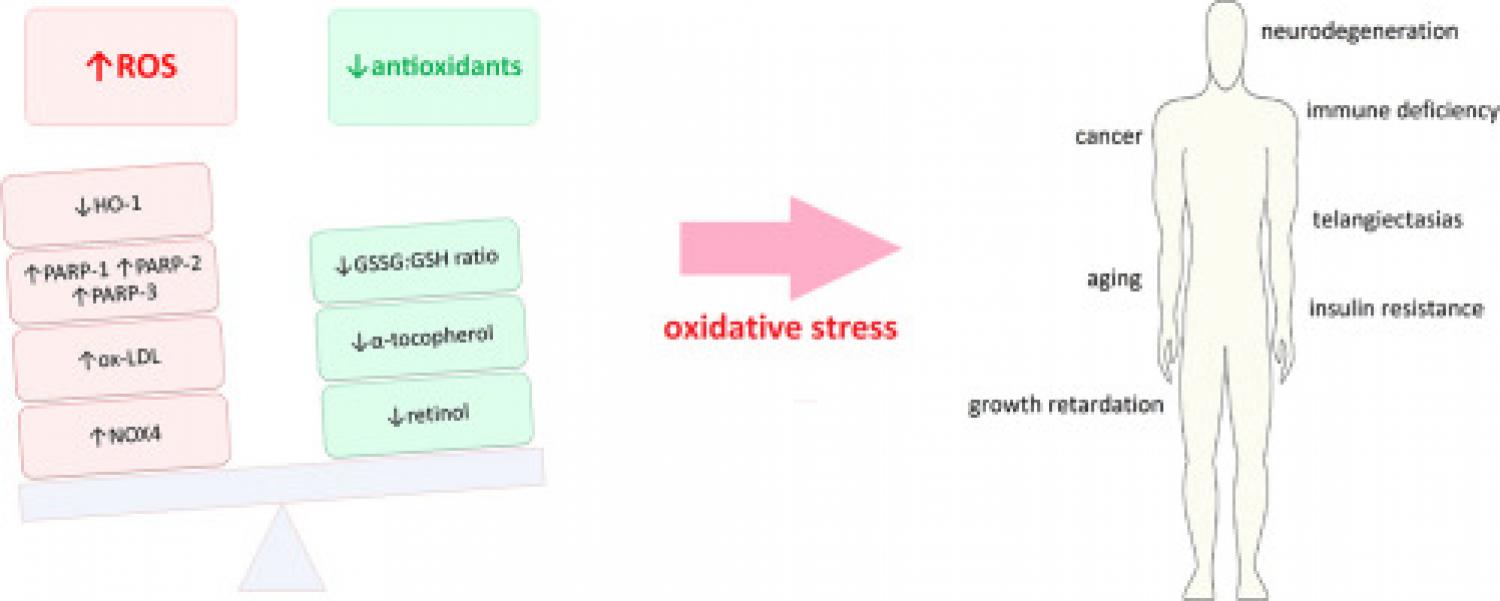
Elsevier, Redox Biology, Volume 11, 1 April 2017
Rare pleiotropic genetic disorders, Ataxia-telangiectasia (A-T), Bloom syndrome (BS) and Nijmegen breakage syndrome (NBS) are characterised by immunodeficiency, extreme radiosensitivity, higher cancer susceptibility, premature aging, neurodegeneration and insulin resistance. Some of these functional abnormalities can be explained by aberrant DNA damage response and chromosomal instability. It has been suggested that one possible common denominator of these conditions could be chronic oxidative stress caused by endogenous ROS overproduction and impairment of mitochondrial homeostasis. Recent studies indicate new, alternative sources of oxidative stress in A-T, BS and NBS cells, including NADPH oxidase 4 (NOX4), oxidised low-density lipoprotein (ox-LDL) or Poly (ADP-ribose) polymerases (PARP). Mitochondrial abnormalities such as changes in the ultrastructure and function of mitochondria, excess mROS production as well as mitochondrial damage have also been reported in A-T, BS and NBS cells. A-T, BS and NBS cells are inextricably linked to high levels of reactive oxygen species (ROS), and thereby, chronic oxidative stress may be a major phenotypic hallmark in these diseases. Due to the presence of mitochondrial disturbances, A-T, BS and NBS may be considered mitochondrial diseases. Excess activity of antioxidant enzymes and an insufficient amount of low molecular weight antioxidants indicate new pharmacological strategies for patients suffering from the aforementioned diseases. However, at the current stage of research we are unable to ascertain if antioxidants and free radical scavengers can improve the condition or prolong the survival time of A-T, BS and NBS patients. Therefore, it is necessary to conduct experimental studies in a human model.
